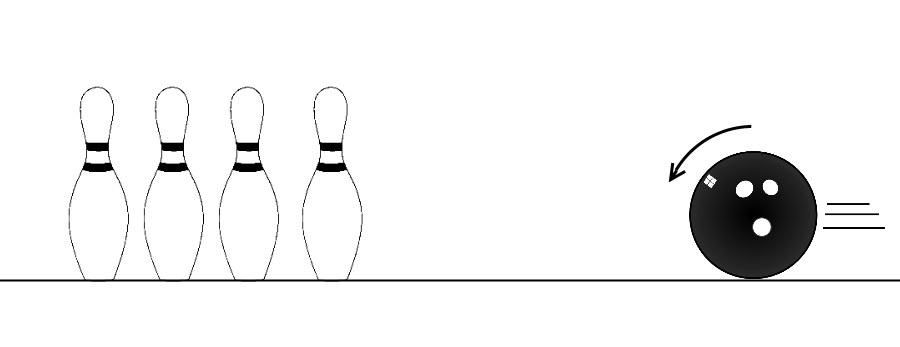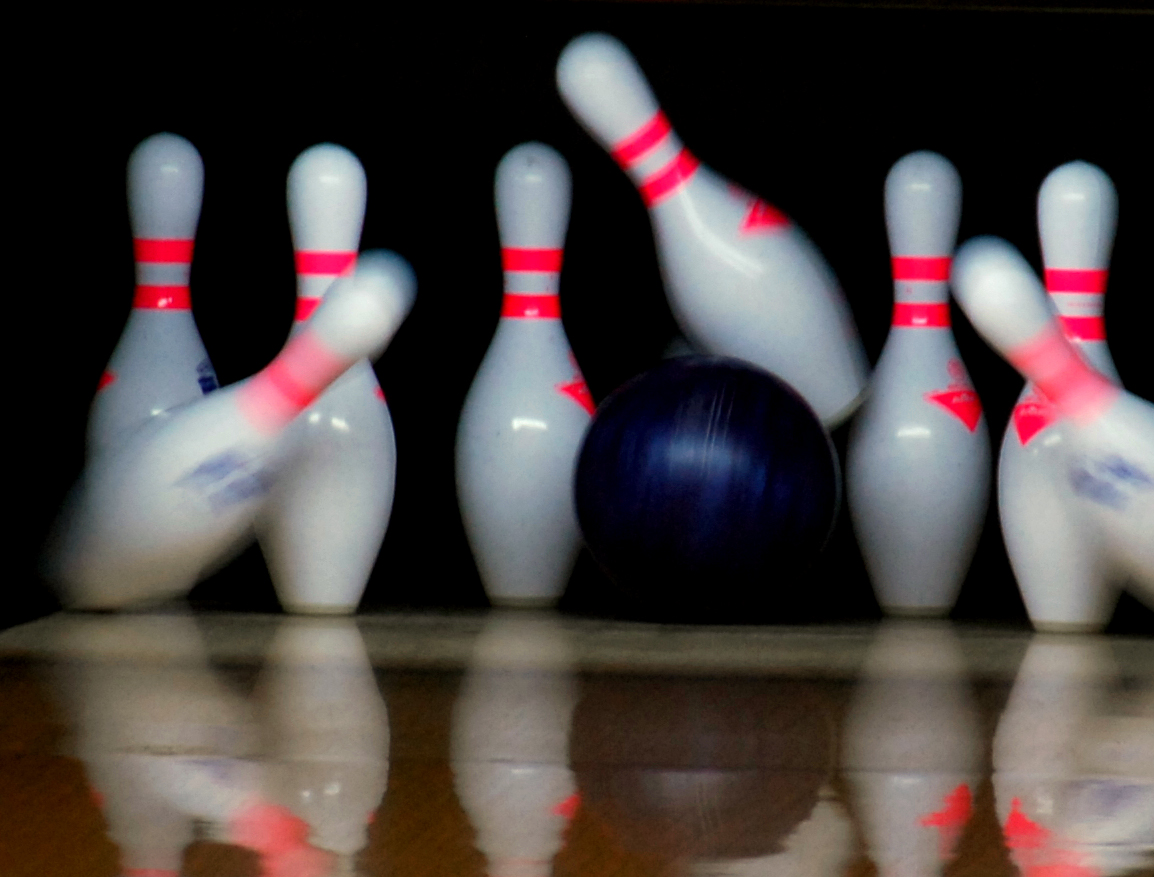Item AP036005: Analyze data and construct an explanation for the change in speed of a bowling ball after it hits a pin using ideas about energy transfer. (CR version)


A person wants to find out how to make the loudest sound when the bowling ball hits the pins. She and her friend decide to do an experiment. She rolls the ball toward the pins. Her friend measures the speed of the ball and the loudness of the sound. She records the data in the table below. Then she rolls the ball again.
|
Speed (miles per hour) |
Loudness (decibels) |
|
| Try 1 | 10 | 80 |
| Try 2 | 15 |
1a. If the speed of the ball during Try 2 is 15 miles per hour, how loud do you think the sound will be on the second try?
A. The loudness will be more than 80 decibels on the second try.
B. The loudness will be less than 80 decibels on the second try.
C. The loudness will be 80 decibels on the second try.
1b. Support you prediction using what you know about the connection between energy, speed, and sound.
Next, the friends want to study the relationship between the speed of the bowling ball and the speed of the pins that are knocked down. They use one pin and an eight-pound bowling ball. They measure the speed of the ball right before it hits the pin and the speed of the pin right after it is hit. They roll the ball three separate times and record the data in the table below.
|
Speed of the ball right before hitting pin
|
Speed of the pin right after being hit
|
||
| Try 1 | 10 | Try 1 | 9 |
| Try 2 | 15 | Try 2 | 14 |
| Try 3 | 18 | Try 3 | 16 |
2a. What pattern do you notice in the data in the table above?
A. The faster the ball is moving before it hits the pin, the faster the pin will move after it is hit.
B. The faster the ball is moving before it hits the pin, the slower the pin will move after it is hit.
C. The pin's speed is not affected by how fast the ball is moving before it hits the pin.
2b. Explain the pattern you noticed in the data using what you know about the relationship between energy and speed.
3. The friends notice that the ball slows down after it hits the pin. Use energy ideas to explain why the ball slows down after it hits the pin. Be sure to write about the observations and include ideas about how energy can move from place to place.
- Percent of Points Earned

- Points Earned
| Avg. Earned | Possible | Percent | |
|---|---|---|---|
| Q1a | 0.73 | 1 | 73% |
| Q1b | 0.26 | 2 | 13% |
| Q2a | 0.58 | 1 | 58% |
| Q2b | 0.18 | 2 | 9% |
| Q3 | 0.8 | 4 | 20% |
- Overall Task Difficulty
| Total Points Earned | Total Points Possible | Total Percent | |
|---|---|---|---|
| 2.55 | 10 | 25% |
n = 274
Note: The total percent is a weighted average based on the total number of points earned divided by the total number of points possible.
- None identified



